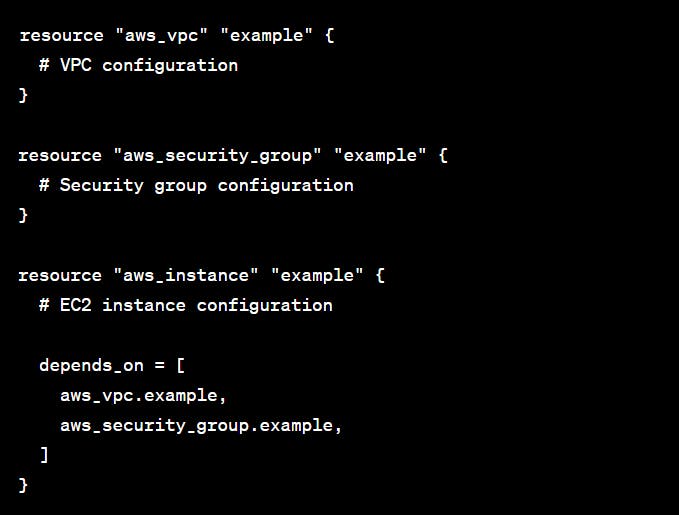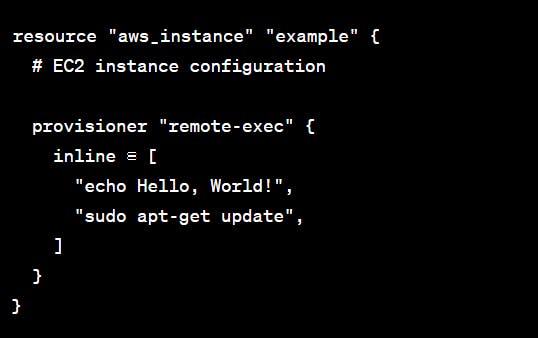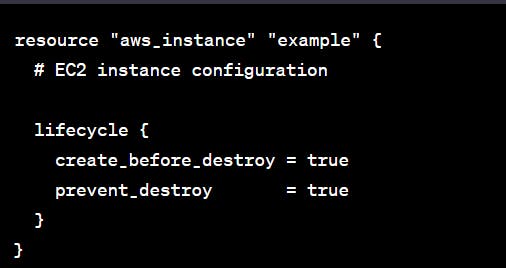Hello Readers 👩💻
Understanding how to define and manage Resources using Terraform
Terraform is an infrastructure as code (IaC) tool that allows you to define and manage your cloud resources in a declarative manner. With Terraform, you can describe your desired infrastructure state in configuration files, and then use Terraform commands to create, update, and destroy resources based on that configuration.
To define and manage resources using Terraform, follow these steps:
Installation: Install Terraform on your machine by downloading it from the official website (terraform.io/downloads.html) and following the installation instructions for your operating system.
Provider Configuration: Choose the cloud provider you want to use (e.g., AWS, Azure, Google Cloud) and configure the provider in your Terraform configuration file. This file is usually named
main.tforterraform.tfprovider "aws" { region = "us-west-2" }Resource Definition: Define the resources you want to manage in your Terraform configuration file. Resources represent the cloud infrastructure components you want to provision, such as virtual machines, storage buckets, databases, and more.
resource "aws_instance" "example" { ami = "ami-0c94855ba95c71c99" instance_type = "t2.micro" }Plan and Apply: After defining your resources, use the Terraform command-line interface (CLI) to plan and apply the changes. The plan command shows you a preview of the changes that Terraform will make to your infrastructure without actually applying them
terraform planIf the plan looks correct, you can apply the changes by running:
terraform apply
- Manage Infrastructure: As your infrastructure requirements change over time, you can update your Terraform configuration file to reflect those changes. When you re-run the
terraform applycommand, Terraform will determine the necessary updates and modify your infrastructure accordingly.
You can also destroy all the resources created by Terraform using the terraform destroy command:
terraform destroy
Explore Various Resource Types and their Configurations
Terraform supports a wide range of resource types across different cloud providers. Here are some examples of popular resource types and their configurations for different providers:
AWS:
EC2 Instance:
```basic resource "aws_instance" "example" { ami = "ami-0c94855ba95c71c99" instance_type = "t2.micro" key_name = "my-keypair" subnet_id = aws_subnet.example.id security_group_ids = [aws_security_group.example.id] }
* **S3 Bucket:**
```basic
resource "aws_s3_bucket" "example" {
bucket = "my-bucket"
acl = "private"
}
Learn about the resource dependencies provisioners, and lifecycle management.
Resource Dependencies: Resource dependencies in Terraform allow you to specify the relationships between resources. These relationships ensure that resources are created or destroyed in the correct order based on their dependencies. Terraform automatically figures out the dependency graph based on the resource configuration and manages the order of resource provisioning.
For example, if you have an EC2 instance that depends on a VPC and a security group, you can express this dependency using the
depends_onattribute

Provisioners: Provisioners in Terraform allow you to run scripts or perform additional configuration actions on a resource after it has been created or destroyed. Provisioners are useful for tasks like running configuration management tools, executing commands on instances, or performing other setup tasks.
Terraform provides different types of provisioners:
Remote Provisioners: These provisioners run scripts on a remote resource over SSH or WinRM. They are typically used for initial configuration tasks.
Local Provisioners: These provisioners run scripts on the machine running Terraform, allowing you to perform actions on the local system or interact with external tools.

Lifecycle Management: Terraform provides lifecycle management settings that allow you to control the behaviour of resources during different phases, such as creation, update, and deletion. These settings help you manage the lifecycle of resources more effectively.
create_before_destroy: This setting controls whether to create a new resource before destroying the old one during an update. By default, Terraform destroys the old resource first and then creates the new one. Enabling this setting allows for zero-downtime replacements.
prevent_destroy: Setting prevent_destroy to true prevents a resource from being destroyed. This can be useful to protect critical resources from accidental deletion.
ignore_changes: ignore_changes allows you to specify resource attributes that Terraform should ignore when determining if a resource needs to be replaced. This can be helpful when certain attributes are managed outside of Terraform.

I appreciate you taking the time to read my blog, and I hope you found it informative. If you found the content useful, please consider giving it a like, sharing it with others, and following me for more similar posts in the future.
Thanks for Reading 😊😊
